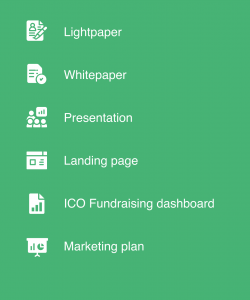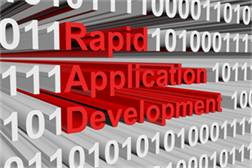Содержание
Companies will increasingly turn towards cloud-based AI and machine learning services. SMBs will benefit the most from ready-to-use advanced services as they cannot create such software in-house. More companies will start to use the public cloud for big data processing. Providers are already responding with solutions for handling massive data sets (e.g., Google BigQuery and Microsoft Azure Data Lake). If some of these concerns are a deal-breaker, consider deploying a Bare Metal Cloud server. Check out our public vs private cloud article to see which of the two infrastructures is a better fit for your business.
The future of IT is hybrid, and it requires that different clouds work together. Engagements with our strategic advisers who take a big-picture view of your organization, analyze your challenges, and help you overcome them with comprehensive, cost-effective solutions. Hybrid clouds are the catch-all, because any workload can be hosted anywhere.
He has done extensive work and research on Facebook and data collection, Apple and user experience, blockchain and fintech, and cryptocurrency and the future of money. Gartner said that demand for integration capabilities, agile work processes and composable architecture will drive the continued shift to the cloud. Our goal is to deliver the most accurate information and the most knowledgeable advice possible in order to help you make smarter buying decisions on tech gear and a wide array of products and services.

94% of businesses saw an improvement in security after moving to the cloud. A big factor contributing to the success of any company is control and business continuity. No matter how in control a company is over its own processes, some things remain out of its remit. Even a small amount of downtime can have a huge negative impact on productivity, revenue, and brand reputation. 40% of users say they abandon websites if pages take longer than three seconds to load.
Cloud Computing Benefits
Salesforce’s Heroku and Salesforce Platform (formerly Force.com) are popular public cloud PaaS offerings; Cloud Foundry and Red Hat’s OpenShift can be deployed on premises or accessed through the major public clouds. For enterprises, PaaS can ensure that developers have ready access to resources, follow certain processes, and use only a specific array of services, while operators maintain the underlying infrastructure. Is a model whereby cloud providers host all development tools on their infrastructures. PaaS can be used for initial software development or DevOps, after which the PaaS provider can go on to host the software on behalf of users.
Serverless computing is so named because the business or person that owns the system does not have to purchase, rent or provide servers or virtual machines for the back-end code to run on. This approach works best for organizations that have their own operating systems, but want tools to support those systems over time. Connecting to servers, firewalls, hardware, and other infrastructure gives companies the freedom to design at scale using pre-built components. Your business must decide not only what type of cloud it wants to deploy, but also what types of cloud computing services it wants to access.
Cloud computing is beneficial from an accounting standpoint because it allows IT infrastructure to be classified as an operational instead of capital expenditure. That’s usually better for business health because operational expenses are tax-advantaged and pay-as-you-go. Many organizations struggle to manage their vast collection of AWS accounts, but Control Tower can help. The history and evolution of cloud computing date back to the 1950s and 1960s. It is elastic — users can have as much or as little of a service as they want at any given time.
- VMs enabled us to run multiple systems within a single physical device, a concept that had a massive impact on the progress of cloud computing.
- Edge computing is about moving compute to local devices in a highly distributed system, typically as a layer around a cloud computing core.
- Here, the resources of private and public clouds are shared to make data handling more flexible and provide better services than ever before.
- A unified solution for providing intelligent operations, self-service and orchestration, security compliance and visibility, and control of cloud costs.
- Its future will likely include exponential advances in processing capability, fueled by quantum computing and artificial intelligence, as well as other new technologies to increase cloud adoption.
Various educational institutions across the world use these services to improve their efficiency and productivity. Now, as you know what is cloud computing, its benefits, and the cloud categories, let’s have a look at the difference between Iaas, Paas, and SaaS. Planning and buying the right kind of hardware has always been a challenge in the traditional legacy environment. If you purchase hardware that doesn’t fit your needs, then chances are you might need to live with that purchase indefinitely. However, this is not an issue with the cloud, since you do not need to buy any hardware.
Mobile “backend” As A Service Mbaas
PaaS provides the resources necessary to develop, test, run, and maintain software. This includes the infrastructure and the OS, middleware, development environment and developer tools. Users, often developers, access the platform via the web, and they are free to focus on the application rather than managing resources. PaaS allows users to deploy standardized or custom applications with supported programming languages, scripts, APIs, and tools. Organizations often turn to private clouds when they need greater reliability, scalability, and security. Many enterprises use them for running sensitive or mission-critical workloads with specific availability, security, and performance requirements.

In most cases, SaaS users pay a monthly or annual subscription fee; some may offer ‘pay-as-you-go’ pricing based on your actual usage. In this model, you are supplied with a pre-built platform from the cloud providers, where you can deploy your codes and applications. cloud business solution You only need to manage the codes and the applications, not the infrastructure. Before the inception of Cloud Computing platforms, businesses predominantly relied on servers, databases, hardware, software, and other peripherals to take their businesses online.
A multicloud exists when organizations leverage many clouds from several providers. Synchronization is a cornerstone of the cloud computing experience, even if you do access the file locally. For more, check out our roundup of theThe Best Cloud Storage and File-Syncing Services for 2020. That’s when you store data on or run programs from the hard drive or your solid-state drive. Everything you need is physically close to you, which means accessing your data is fast and easy, for that one computer, or others on the local network.
How Cloud Security Builds Trust
These include white papers, government data, original reporting, and interviews with industry experts. We also reference original research from other reputable publishers where appropriate. You can learn more about the standards we follow in producing accurate, unbiased content in oureditorial policy. Jake Frankenfield is an experienced writer on a wide range of business news topics and his work has been featured on Investopedia and The New York Times among others.

At least a few of those environments need to be sourced from consolidated IT resources that can scale on demand. And all those environments need to be managed as a single environment using an integrated management and orchestration platform. So while we compare the differences below, there are plenty of caveats.
Over time, companies have begun exploring the more advanced aspects of cloud computing, using flexible development environments to build new applications or implement robust storage solutions. A multi-cloud approach is a particular case of hybrid cloud in which an organization uses services from multiple public cloud providers. When we update our status on social media, binge a new streaming series, or check our bank accounts we’re most likely using applications that are hosted by cloud services. These apps are accessed through an internet connection rather than installed on our hard drives or devices. Cloud computing services are available through hyperscale public data centers, on-premises in privately owned data centers, or in hosted or managed settings. Many organizations use some combination of all three, taking a hybrid multicloud networking approach.
Disadvantages Of The Cloud
Let’s now dive into what is cloud computing and understand the concept of cloud. With cold storage, the digital wallet is stored in a platform that is not connected to the internet. As with any technology, there is a learning curve for both employees and managers. But with many individuals accessing and manipulating information through a single portal, inadvertent mistakes can transfer across an entire system. With all of the speed, efficiencies, and innovations that come with cloud computing, there are, naturally, risks.
PaaS is a cloud environment supporting web application development and deployment. PaaS supports the full lifecycle of applications, helping users build, test, deploy, manage and update all in one place. The service also includes development tools, middleware and business intelligence solutions. Notable examples include Windows Azure, AWS Elastic Beanstalk and Google App Engine. Third-party providers sell public cloud services on demand, typically charging by the minute or hour of service use.
Application Performance Monitoring Tools To Know
Top cloud vendors like Salesforce employ experts in computer science and cybersecurity who update their systems and secure customers’ information, and also take on the burden of meeting regulatory requirements. That frees organizations from having to find and keep cybersecurity talent, assemble dedicated compliance teams, troubleshoot bugs, and adapt to new security threats. Because the speed and cost of local storage outstrip using a wide-area network connection controlled by a telecom company . The prime modern example of a device that is completely cloud-centric is theChromebook. These laptops have just enough local storage and power to run Chrome OS, which essentially turns theGoogle Chrome web browser into an operating system. Because of that, they tend to be inexpensive and that’s made them incredibly popular for education.
Most Famous Cloud Computing Examples
Sensitive services and applications can be kept in the secure private cloud while publicly-accessible web servers and customer-facing endpoints can live in the public cloud. Most popular third-party cloud providers offer https://globalcloudteam.com/ a hybrid cloud model, allowing users to combine private and public clouds to satisfy their needs. This allows businesses greater flexibility to deploy the specific infrastructure requirements of their application.
Users are still responsible for managing the OS, middleware, runtime environment, applications, and data. Hybrid cloud combines private and public cloud models, allowing organizations to leverage the benefits of shared resources while using existing IT infrastructure for critical security requirements. The hybrid cloud model allows companies to store confidential data internally and access it via applications running in the public cloud. To comply with privacy regulations, for example, an organization could store sensitive user data in a private cloud and perform resource-intensive computation in the public cloud. IaaS is one of the fundamental service model of cloud computing alongside PaaS. It provides access to computing resources in a virtualized environment “the cloud” on internet.
The vendor you choose carefully separates your data from data used by other organizations. Users can access and store important data only through trusted operation environments. You understand the privacy laws of the countries that will have access to your data. We believe in the power of technology to reduce the complexity in our jobs.
An organization using IaaS can connect thin clients or other small computers with minimal on-premise hardware and software resources. Cloud computing refers to the on-demand provision of IT resources through the internet. Instead of using software or hardware that’s on-site, you use technology housed in a remote database. While sometimes free, cloud computing services are typically paid for on a subscription basis. In the IaaS model, a cloud service provider owns and manages the hardware infrastructure , along with virtualization services. The customer maintains control of the rest of the stack, from the O/S down to the application level.
Gdpr And Cloud Computing
For many companies, a cloud migration is directly related to data and IT modernization. Initially, companies only leveraged some of the unique characteristics. For instance, a company may have migrated some on-premises applications to a cloud provider, offloading the maintenance work needed for local servers.
Analysts argue that as the cloud now underpins most new technological disruptions in everything from mobile banking to healthcare, usage is only going grow. It’s hard to see many new technology projects being delivered that don’t harness the cloud in some way. Gartner says that more than 85% of organizations will embrace a cloud-first principle by 2025 and will not be able to fully execute on their digital strategies without it. The analyst says new workloads deployed in a cloud-native environment will be pervasive, not just popular, and anything non-cloud will be considered legacy. By 2025, Gartner estimates that over 95% of new digital workloads will be deployed on cloud-native platforms, up from 30% in 2021.
Deliver More Business Value With A Nutanix Private Cloud
European companies are worried that, for example, if their customer data is being stored in data centres in the US or , it could be accessed by US law enforcement. As a result, the big cloud vendors have been building out a regional data centre network so that organizations can keep their data in their own region. It estimates that almost two-thirds of spending on application software will be via cloud computing, up from 57.7% in 2022. In turn, providers of cloud-computing services can benefit from significant economies of scale by delivering the same services to a wide range of customers.
PhoenixNAP’s hybrid cloud solution enables you to unify different IT environments and create a system that’s a hand-in-glove fit with your business demands. Automation provides users with a high degree of self-service to provision resources, connect services, and deploy cloud workloads. The frontend enables the end-user to access and manage cloud-based data. This component includes all the elements visible to the consumer, such as browsers, GUIs of web apps, etc.

